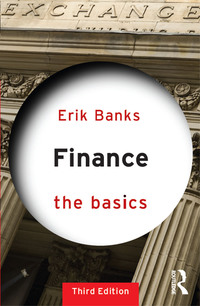Question
Ironically, Satyam means truth in the ancient Indian language Sanskrit. Satyam won the Golden Peacock Award for the best governed company in 2007 and in
Ironically, Satyam means "truth" in the ancient Indian language "Sanskrit". Satyam won the "Golden Peacock Award" for the best governed company in 2007 and in 2009. From being India's IT "crown jewel" and the country's "fourth largest" company with high-profile customers, the outsourcing firm Satyam Computers has become embroiled in the nation's biggest corporate scam in living memory. Mr. Ramalinga Raju (Chairman and Founder of Satyam; henceforth called "Raju"), who has been arrested and has confessed to a $1.47 billion (or Rs.7800 crore) fraud, admitted that he had made up profits for years. According to reports, Raju and his brother, B. Rama Raju, who was the Managing Director, "hid the deception from the company's board, senior managers, and auditors". The case of Satyam's accounting fraud has been dubbed as "India's Enron". In order to evaluate and understand the severity of Satyam's fraud, it is important to understand factors that contributed to the "unethical" decisions made by the company's executives. First, it is necessary to detail the rise of Satyam as a competitor within the global IT services market-place. Second, it is helpful to evaluate the driving-forces behind Satyam's decisions: Ramalinga Raju. Finally, attempt to learn some "lessons" from Satyam fraud for the future.
Greed for money, power, competition, success and prestige compelled Mr. Raju to "ride the tiger", which led to violation of all duties imposed on them as fiduciariesthe duty of care, the duty of negligence, the duty of loyalty, the duty of disclosure towards the stakeholders.
"The Satyam scandal is a classic case of negligence of fiduciary duties, total collapse of ethical standards, and a lack of corporate social responsibility. It is human greed and desire that led to fraud. This type of behavior can be traced to: greed overshadowing the responsibility to meet fiduciary duties; fierce competition and the need to impress stakeholders especially investors, analysts, shareholders, and the stock market; low ethical and moral standards by top management; and, greater emphasis on short-term performance" [28]. According to CBI, the Indian crime investigation agency, the fraud activity dates back from April 1999, when the company embarked on a road to double-digit annual growth. As of December 2008, Satyam had a total market capitalization of $3.2 billion dollars.
Global auditing firm, PricewaterhouseCoopers (PwC), audited Satyam's books from June 2000 until the discovery of the fraud in 2009. Several commentators criticized PwC harshly for failing to detect the fraud. Indeed, PwC signed Satyam's financial statements and was responsible for the numbers under the Indian law. One particularly troubling item concerned the $1.04 billion that Satyam claimed to have on its balance sheet in "non-interestbearing" deposits. According to accounting professionals, "any reasonable company would have either invested the money into an interest-bearing account, or returned the excess cash to the shareholders. The large amount of cash thus should have been a 'red-flag' for the auditors that further verification and testing was necessary. Furthermore, it appears that the auditors did not independently verify with the banks in which Satyam claimed to have deposits".
(Corporate Accounting Fraud: A Case Study ofSatyam Computers Limited
Madan Lal Bhasin Bang, KIMEP University, Almaty, Republic ofKazakhstan
Open Journal ofAccounting, 2013, 2, 26-38 http://www.scirp.org/journal/ojacct) Required:-
- What was the main plan of Mr. Ramalinga Raju to pump the stock price, cover the loss and attract more investment? How had he cooked the books to inflate profit and cash flows? (5 marks)
- There have been many audit failure globally, and Satyam is also a case of unethical accounting and failed auditing practices. Critically discuss the responsibility for financial reporting in relation to Satyam's scandal. (5 marks)
- Critically evaluate the role of auditor's and board composition of Satyam computer before its crises. (5 marks)
Step by Step Solution
There are 3 Steps involved in it
Step: 1

Get Instant Access to Expert-Tailored Solutions
See step-by-step solutions with expert insights and AI powered tools for academic success
Step: 2

Step: 3

Ace Your Homework with AI
Get the answers you need in no time with our AI-driven, step-by-step assistance
Get Started


